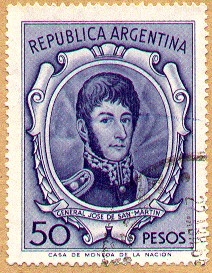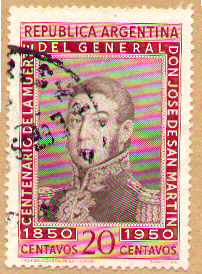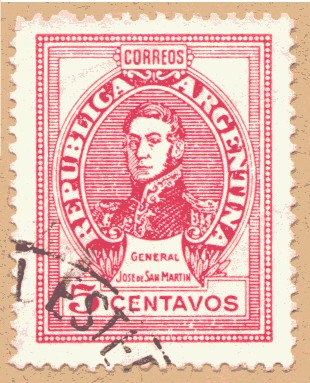General José de San Martín
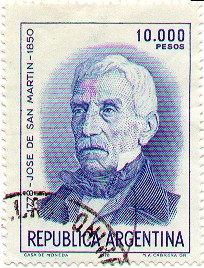
José de San Martín (1778-1850) Argentine soldier and politician. Son of a Lieutenant Governor, he went with his family to Spain in 1784, where he entered as an infantry cadet in Murcia (1789) He participated in the Battle of Bailén (1808) and was promoted to lieutenant colonel. After the May Revolution in Buenos Aires (1810), he went to London (1811), where he interacted with American patriots, with whom he embarked for Buenos Aires (1812). |
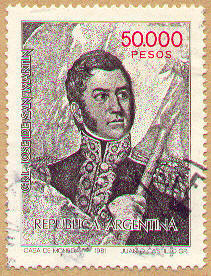
He participated in the Lautaro Lodge and organized the regiment of Grenadiers on Horseback, with which he defeated the royalists at San Lorenzo (1813). Chief of the Army of the North, replacing Belgrano and Governor of Cuyo (1814); he settled in Mendoza, where he developed his plan to make Chile and Peru independent. After organizing the army of the Andes (1816). crossed the mountain range. He won at Chacabuco (1817) and entered Santiago de Chile, where he ceded to O'Higgins the government that the Cabildo offered him. Defeated with O'Higgins at Cancha Rayada, his victory at Maipú (1818) consolidated Chile's independence, with the support of which he organized the expedition to Peru. The squadron, which he put under The command of Cochrane, sailed from Valparaíso (1820) and landed in Pisco. Once the invasion began, he negotiated peace with Viceroy Pezuela, and with his successor, La Serna, he signed the Pact of Punchauca, which guaranteed the independence of Peru, in exchange for the enthronement of a Prince of the Spanish royal family. Opposition from royalist officials annulled the pact and San Martín entered Lima (1821), where he proclaimed the independence of Peru and took the title of Protector. He sent reinforcements to Sucre, for the battle of Pichincha (1822), but since the royalists still occupied much of the territory of Peru, he sought the collaboration of Bolivar, with whom he held an interview in Guayaquil. In it he contrasted his monarchism with the Republican conviction of the Liberator, however putting the interests of America first, he ceded to Bolivar the glory of the liberation of Peru and retired to Lima, where he resigned the command. He went to Chile and Argentina (1823) and when his wife died, he settled in Europe (1824). He returned to Buenos Aires in 1829, but in the face of the prevailing disorder and the signs of hostility he received, he did not disembark and returned to France, where he died in 1850.


